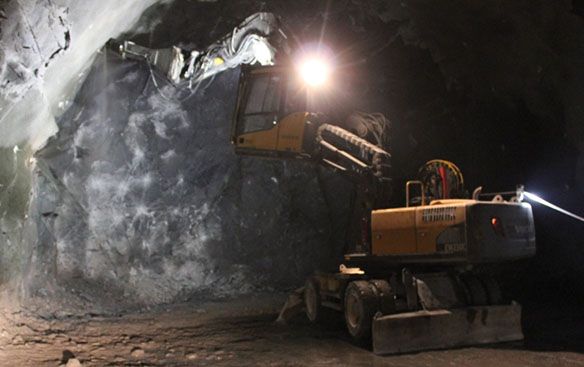.jpeg)
How to build a tunnel to sky
Famous for its fjords, vast supply of oil and being a great place to watch the Aurora Borealis – more commonly known as the Northern lights – Norway also has an impressive network of tunnels. Volvo Construction Equipment is helping to construct the Larvik and Matineå tunnels in Norway, linking the towns of Bommestad and Sky.

Two tunnels are currently under construction as part of a state funded infrastructure development program. The project, which began earlier this year, comprises 7 km of four lane highway – part of the E18 major route – linking the towns of Bommestad and Sky. This includes the new Larvik and Matineå tunnels, which will span 2.8 and 1.3 km respectively.
Two Volvo Construction Equipment EW230C-Series wheeled excavators, modified for this specific project, are working in the Larvik tunnel section.
An air compressor unit, activated by the hydraulic breaker is fitted to blow clean air around the breaker, preventing ingress of dust and an upper structure-mounted 50-meter hose reel feeds through constant water to reduce dust and improve visibility. With full consideration to the environment, the water used during operations every day is pumped into large holding tanks situated close to the tunnel exit, where the water is then treated for re-use.
Volvos clean up down under
Once a section of tunnel has been blasted, Volvo wheel loaders form part of a load handling team before a EW230C wheeled excavator equipped with a bucket cleans up. The second machine, equipped with a breaker, will be handling stripping operations at the other end of the tunnel. To ensure operator and equipment safety, rock bolts are inserted at multiple points to secure the roof structure.
A specially equipped Volvo EC250DL is also working in Larvik, drilling the rock face alongside the existing road to prepare for blasting. This is where the road will be lowered to the tunnel exit – a short distance from where the new bridge will be constructed.
Minimal traffic disruption
Traffic flow continues and is only disturbed two to three times a day when the rock is blasted. Though small blasts, handling 50-70 cubic meters each time, heavy rubber protective mats are positioned over the rock to safeguard against flying debris.
“I like the Volvo,” says Ger Egil, machine operator. “I appreciate the space in the cab and low noise, but I especially like the elevating cab as I can get really close to where I am drilling.” He also explained how the entire operation can be handled via remote control depending on the working conditions.
There are about 20 Volvo units on the site, including EC250, EC380D and E-series excavators, a L110F and L250F, G-series wheel loaders and A35FFS and A40FFS full suspension articulated haulers. The project is scheduled for completion in 2017.